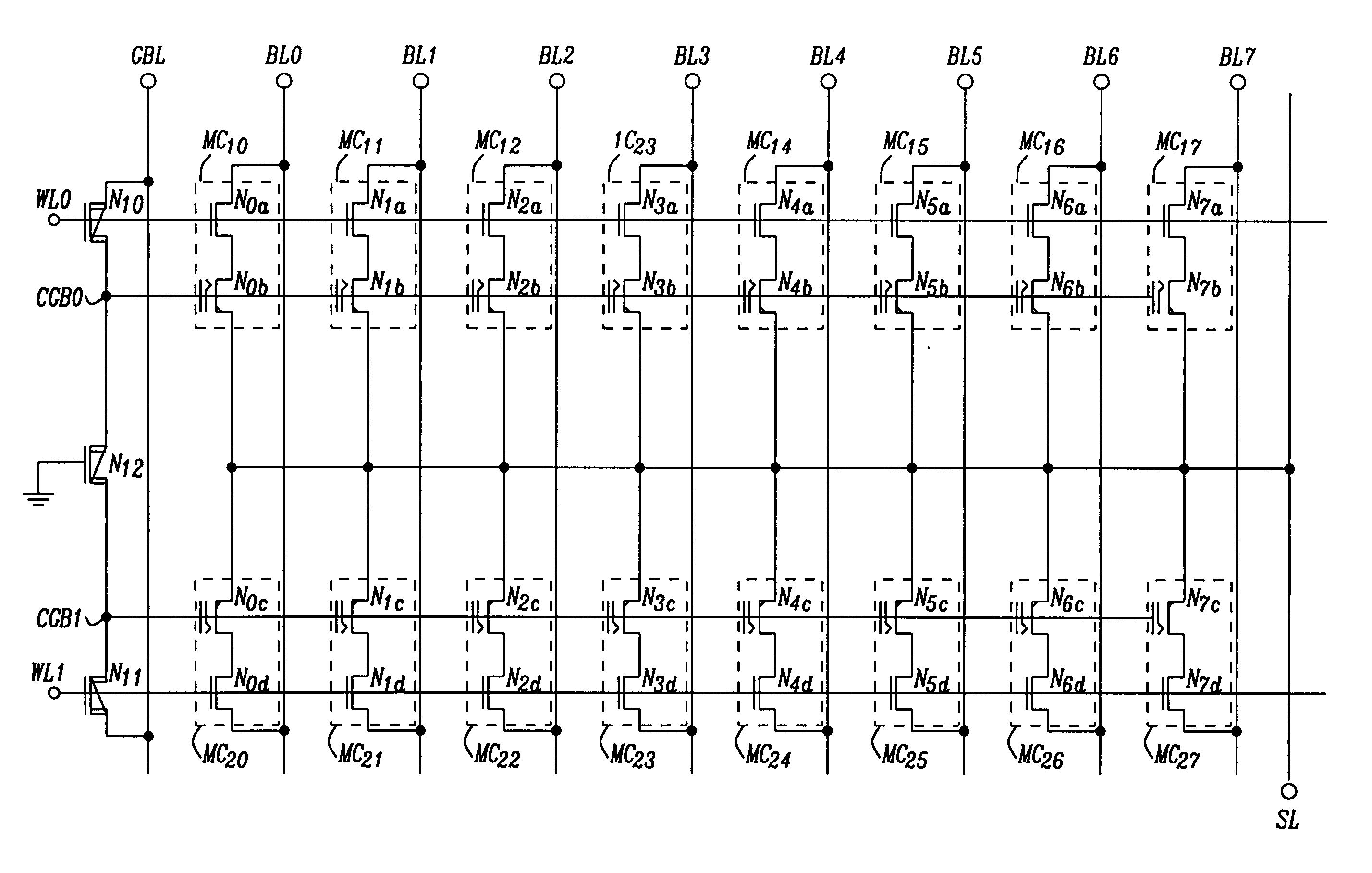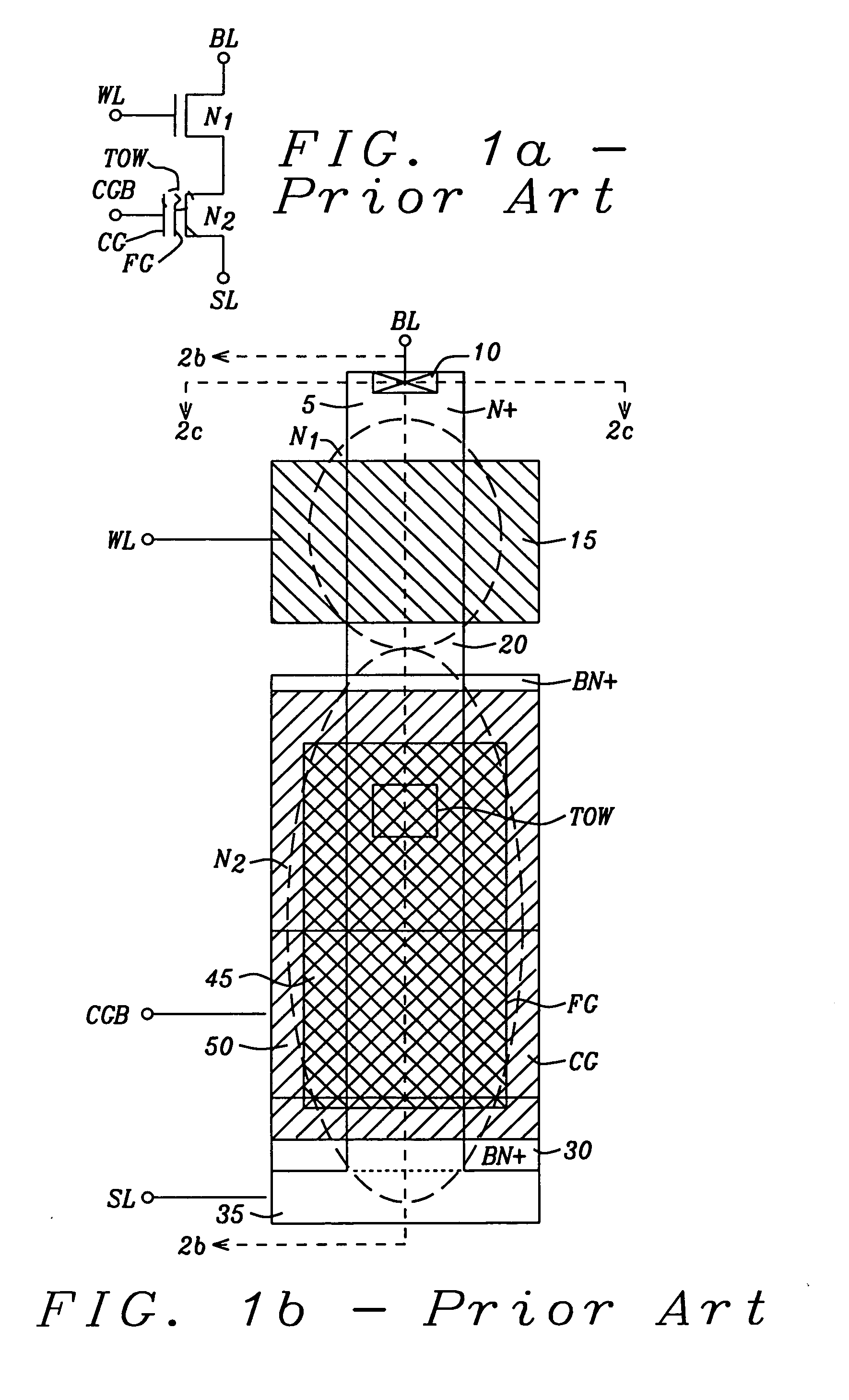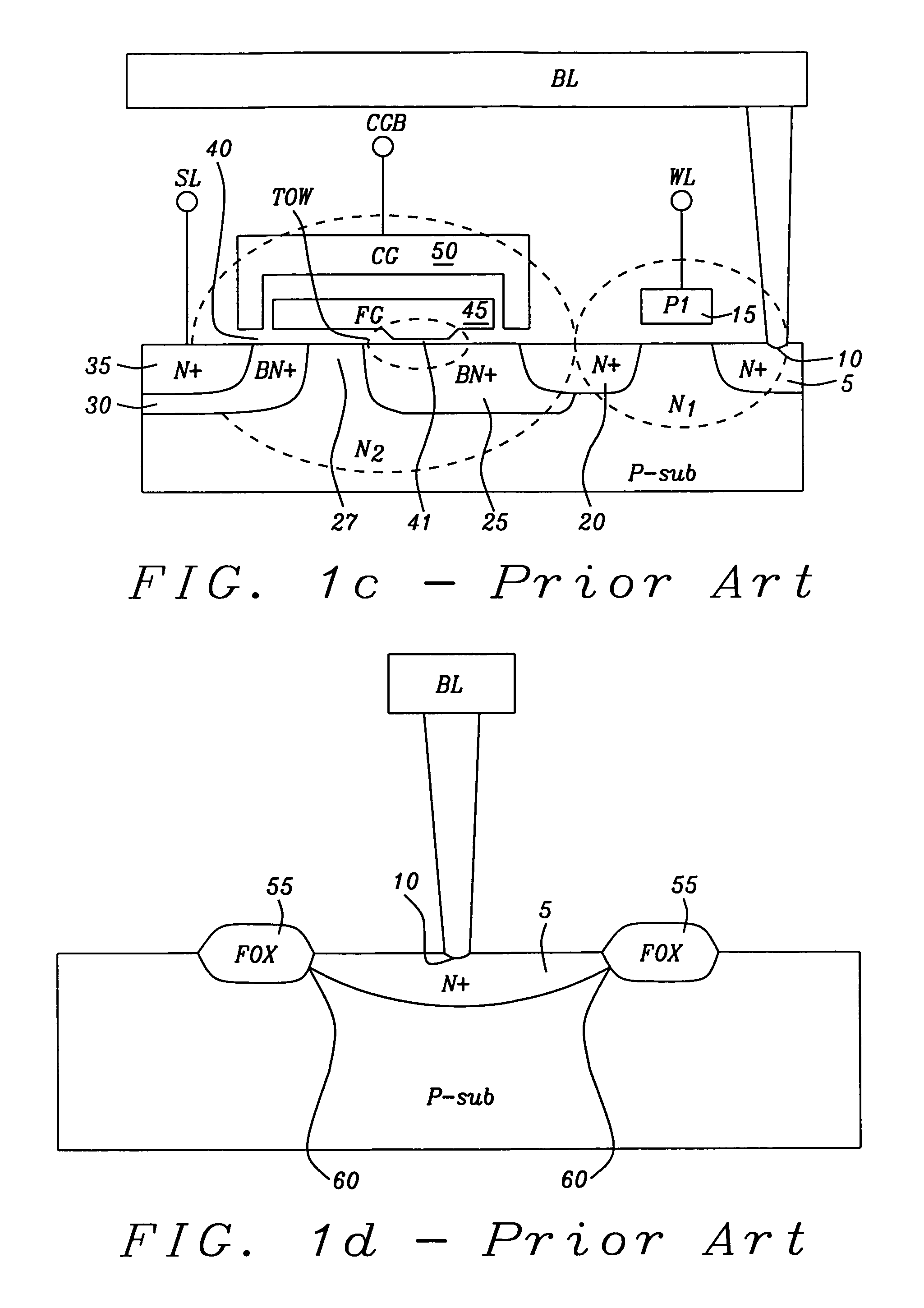Novel high-temperature non-volatile memory design
a non-volatile memory and high-temperature technology, applied in the field of memory circuits and integrated circuit processes for fabricating memory circuits, can solve problems such as serious constraints of gidl, and achieve the effect of preventing excess junction leakage curren
- Summary
- Abstract
- Description
- Claims
- Application Information
AI Technical Summary
Benefits of technology
Problems solved by technology
Method used
Image
Examples
Embodiment Construction
[0053]FIG. 1a illustrates the schematic circuit for a 2-transistor FLOTOX EEPROM cell of the prior art. The EEPROM cell of the prior art includes of two transistors N1 and N2. The select transistor, N1 is a polycrystalline silicon (polysilicon) NMOS device with its gate connected to a select gate signal SG. The source of the select transistor N1 is connected to the drain of the floating gate tunnel oxide (FLOTOX) EEPROM transistor N2. The FLOTOX EEPROM transistor N2 is a double polysilicon floating gate device. A first layer of polysilicon is the floating-gate FG that is used to store the charges representing the binary “0” and binary “1” of the stored data. The second layer of the polysilicon is a control gate CG that is connected to the word line WL. The drain of the select transistor N1 is connected to a vertical metal bit line BL. The source of the EEPROM transistor N2 is connected to a common horizontal implanted source line SL.
[0054]FIGS. 1b and 1c illustrate the physical layo...
PUM
 Login to View More
Login to View More Abstract
Description
Claims
Application Information
 Login to View More
Login to View More - R&D
- Intellectual Property
- Life Sciences
- Materials
- Tech Scout
- Unparalleled Data Quality
- Higher Quality Content
- 60% Fewer Hallucinations
Browse by: Latest US Patents, China's latest patents, Technical Efficacy Thesaurus, Application Domain, Technology Topic, Popular Technical Reports.
© 2025 PatSnap. All rights reserved.Legal|Privacy policy|Modern Slavery Act Transparency Statement|Sitemap|About US| Contact US: help@patsnap.com



